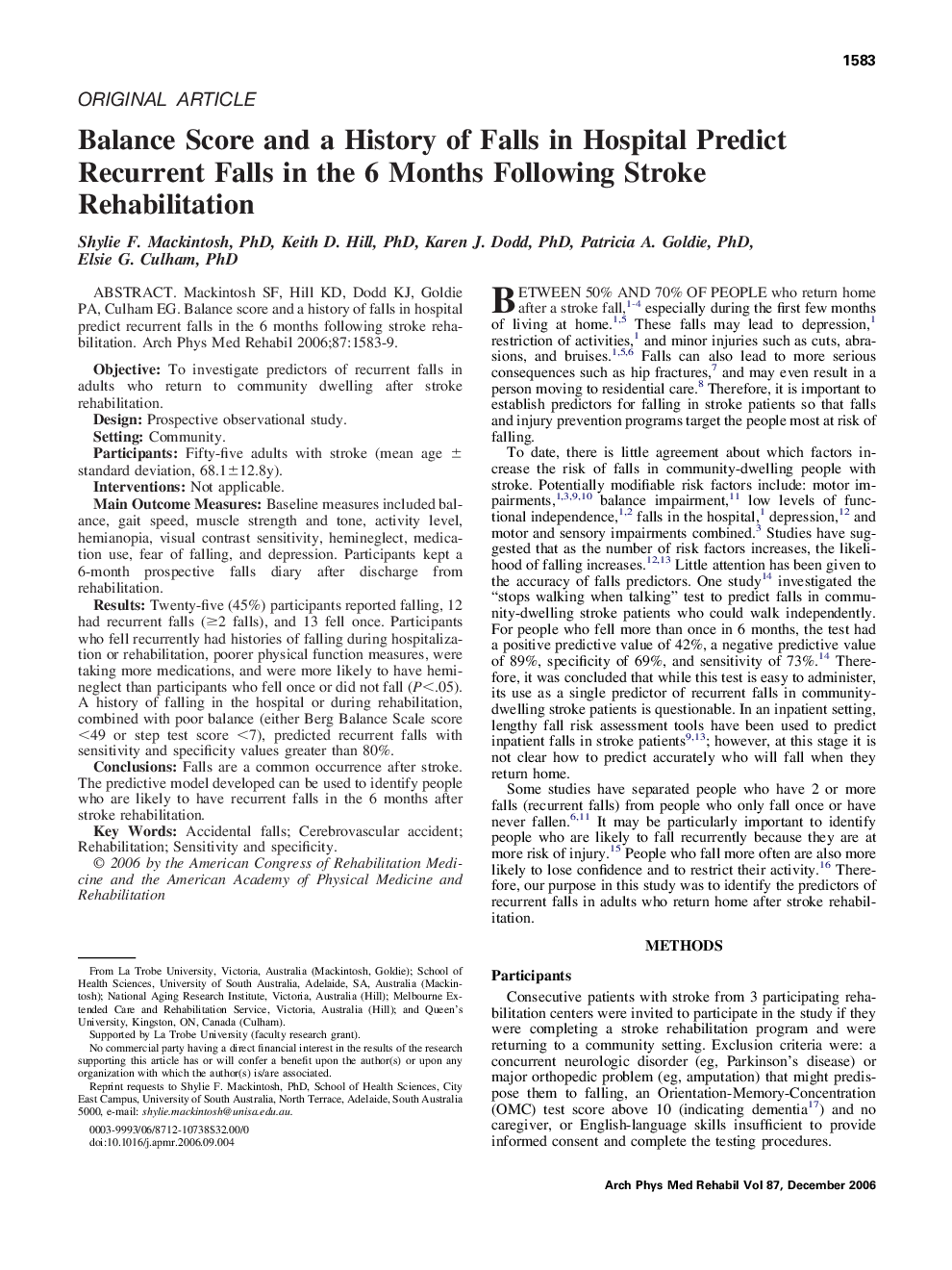| Article ID | Journal | Published Year | Pages | File Type |
|---|---|---|---|---|
| 3452401 | Archives of Physical Medicine and Rehabilitation | 2006 | 7 Pages |
Mackintosh SF, Hill KD, Dodd KJ, Goldie PA, Culham EG. Balance score and a history of falls in hospital predict recurrent falls in the 6 months following stroke rehabilitation.ObjectiveTo investigate predictors of recurrent falls in adults who return to community dwelling after stroke rehabilitation.DesignProspective observational study.SettingCommunity.ParticipantsFifty-five adults with stroke (mean age ± standard deviation, 68.1±12.8y).InterventionsNot applicable.Main Outcome MeasuresBaseline measures included balance, gait speed, muscle strength and tone, activity level, hemianopia, visual contrast sensitivity, hemineglect, medication use, fear of falling, and depression. Participants kept a 6-month prospective falls diary after discharge from rehabilitation.ResultsTwenty-five (45%) participants reported falling, 12 had recurrent falls (≥2 falls), and 13 fell once. Participants who fell recurrently had histories of falling during hospitalization or rehabilitation, poorer physical function measures, were taking more medications, and were more likely to have hemineglect than participants who fell once or did not fall (P<.05). A history of falling in the hospital or during rehabilitation, combined with poor balance (either Berg Balance Scale score <49 or step test score <7), predicted recurrent falls with sensitivity and specificity values greater than 80%.ConclusionsFalls are a common occurrence after stroke. The predictive model developed can be used to identify people who are likely to have recurrent falls in the 6 months after stroke rehabilitation.
